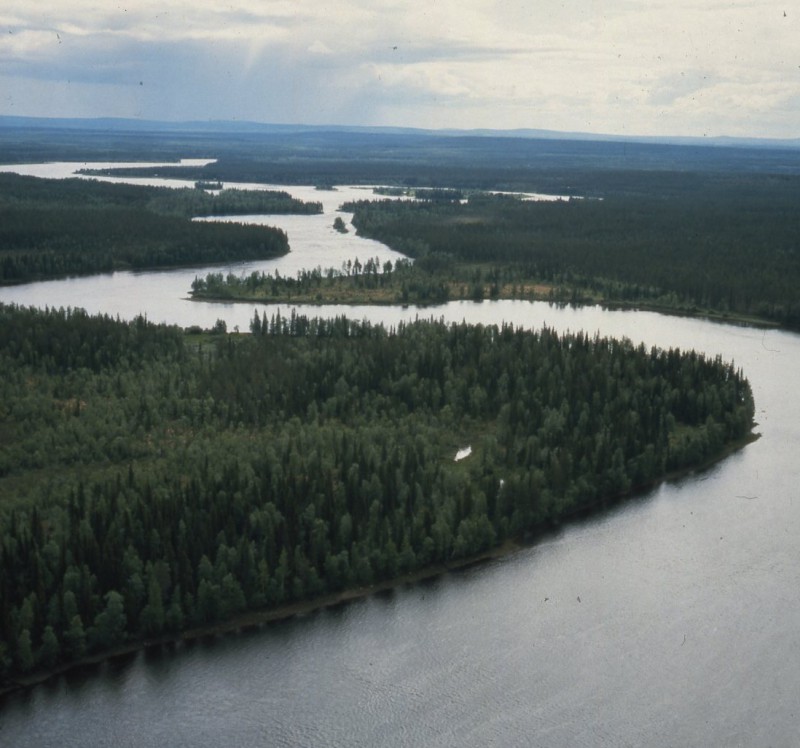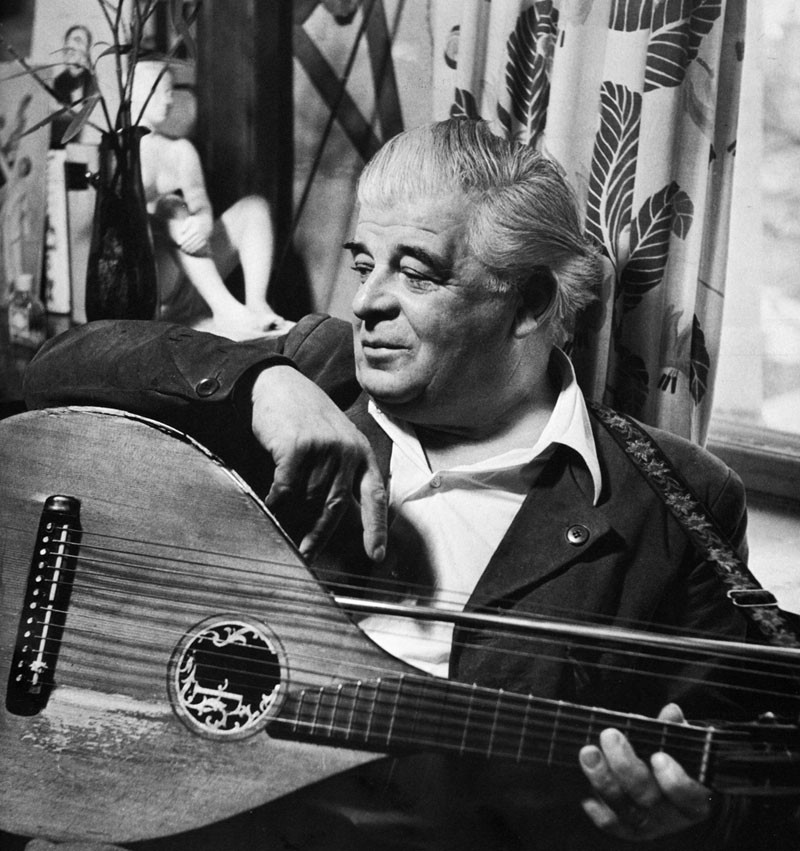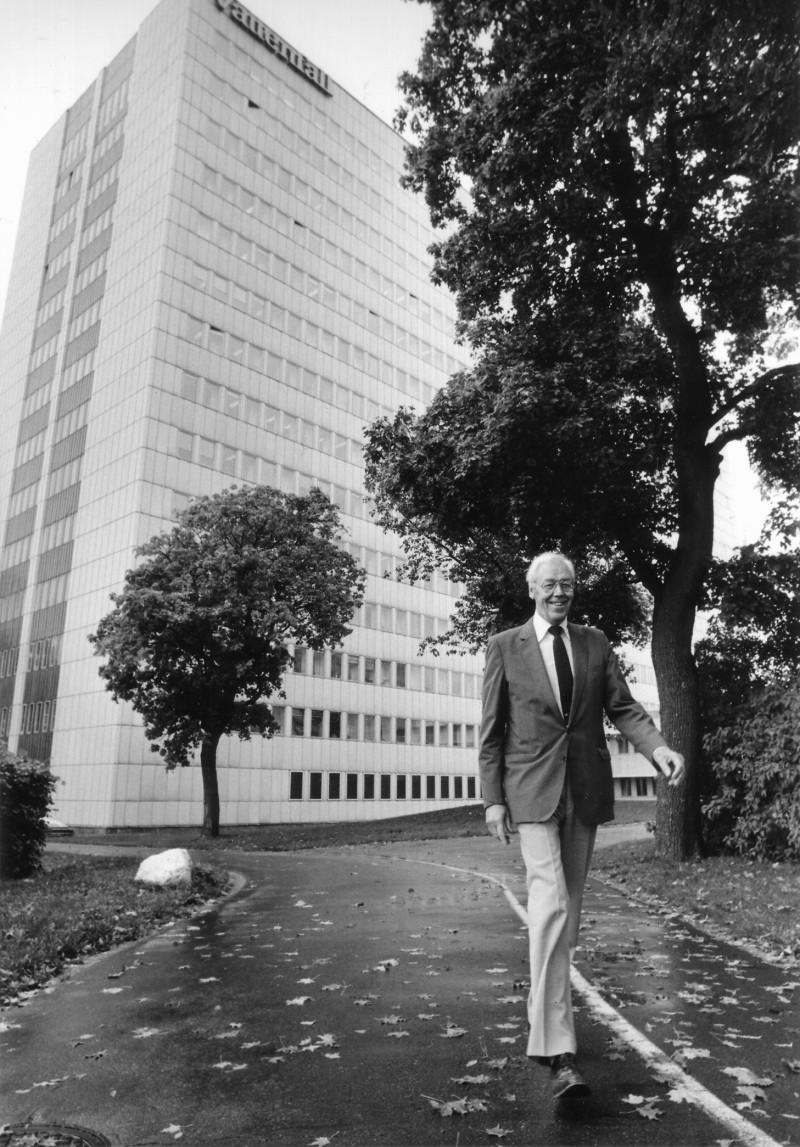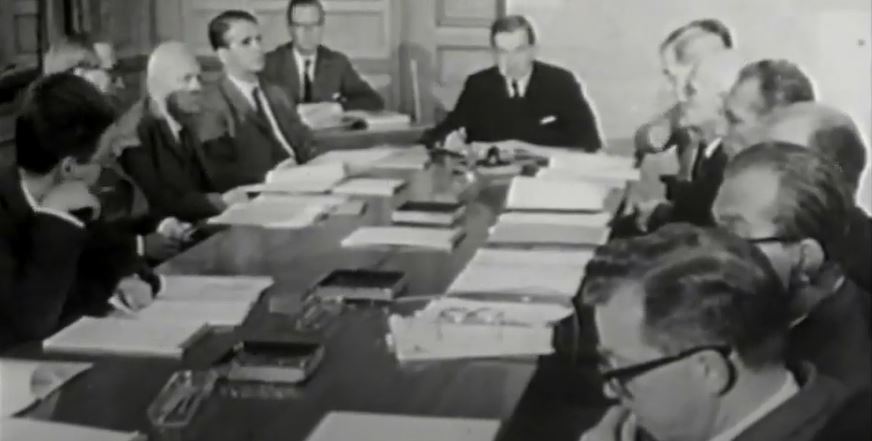
Raging protests against river exploitation
The agreement between Vattenfall and the conservation movement in 1961 – Freden i Sarek (Peace in Sarek) – was not the end to conflict over river development. It had only just begun. Over ten years, the tone against Vattenfall sharpened radically, and the issue was finally given a political solution.

The Kalix river. Year: 1970 | Place: Kalix | Creator: Vattenfall | ID: VF000098
Until the 1950s it was very difficult to find sympathy for critical comments against hydropower exploitation. Instead, there was a fascination with the technical and economic progress. The objections raised prior to 1950 were primarily aesthetic. The arguments were rational and economic; for example, that the prerequisites for tourism disappeared.
In 1952, a new Nature Conservation Act came into force, from which time the non-profit organisations Samfundet för Hembygdsvård (Society for Rural Conservation) and Svenska Naturskyddsföreningen (the Swedish Society for Nature Conservation) became the experts on issues pertaining to nature conservation and landscape preservation. Together with Svenska turistföreningen (the Swedish Tourist Association) and other interested parties, including state bodies, the so-called Naturvårdsdelegationen (Nature Preservation Delegation) emerged.
This delegation drafted and submitted a preservation register to the government – a list of lakes and streams to be protected from exploitation. The proposal was ignored. However, an investigation was launched, with a new list of objects to be protected from exploitation being presented in 1959.
The 1959 list was welcomed by the conservation movement but was greeted negatively by hydropower companies, including Vattenfall. Despite this, it came to form the basis of an agreement between Naturvårdsdelegationen and Vattenfall in 1961: Freden i Sarek (Peace in Sarek). This agreement involved the nature conservation movement giving up the river Vindelälven. The arrangement was approved by parliament and government, and was regarded as setting a standard.
Just the start of hostilities

The Kalix river. Year: 1970 | Place: Kalix | Creator: Vattenfall | ID: VF000099
Vattenfall and the government now believed that a solid basis had been laid for future cooperation on exploitation issues. And for a few years the situation was peaceful. But when Vattenfall presented its development plans for the river Vindelälven, the protests started again. And they would only increase in vehemence.
The development plans meant, among other things, that a storage reservoir would be dammed 46 metres above Gautojaure's then average water level, and the village of Adolfström would be flooded. Initially, only local opinion groups were formed. Common to them all was the fact that they were not bound by the Freden i Sarek agreement. More and more organisations joined the protest, and the organised nature preservation movement now also rejected the previous agreement.
Opinions grew stronger. The issue was examined in newspaper editorials, in magazines, topical books, the daily press, broadcast media and in parliament. The issue soon divided party political opinion, with a clear line emerging between the left and the right. The right supported preservation, the left development.

Evert Taube was against further exploitation of the Swedish rivers. Year: - | Place: - | Creator: Okänd | ID: VF000096
Many cultural figures became involved in the issue, including Evert Taube, who wrote an article for the culture section of newspaper Expressen: 'Telegram for the prime minister'. He wrote 'If this is allowed to happen, then the devil and not I will be Swedish'.

Telegram for the prime minister. The letter Evert Taube wrote to the prime minister. Year: - | Place: - | Creator: Evert Taube | ID: VF000095
Vattenfall's Director General, Jonas Norrby, answered Evert Taube with a personal letter to the national poet, in which he invited him to visit the developed rivers. Evert Taube thanked him and accepted the invitation. But the trip never took place. However, there were some Social Democrats who opposed the party line and the development of the river Vindelälven. Most vocal was Nancy Eriksson, who ran an intensive campaign. The river dispute finally proved untenable for the government, and in spring 1970 Prime Minister Olof Palme was forced to give in to public opinion. Public opinion that initially consisted of only a few hundred people wanting to save a river had, by then, grown so strong that it managed to achieve a majority in parliament against continued development.

Jonas Norrby. Director general of Vattenfall 1970–1985. Walking outside of the Vattenfall head office. Year: - | Place: Råcksta | Creator: Bo Dahlin | ID: VF000097
The river Vindelälven was later classed as a national river, meaning it was protected against development. The rivers Torne älv, Kalix älv and Pite älv are also national rivers.
Video player requires marketing cookies.
To view this content please click here to allow marketing cookies.
Signing the 'Peace in Sarek' agreement in 1961 (in Swedish)




